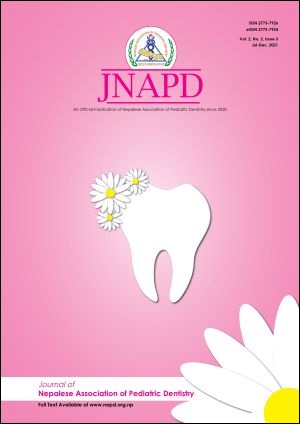Antibiotic Prescription Knowledge among Dental Students at BPKIHS, Dharan, Nepal
DOI:
https://doi.org/10.3126/jnapd.v2i2.43908Keywords:
Antibiotics, dental students, prescription, resistanceAbstract
Introduction: Drug prescription is the act of indicating one or more drugs which requires theoretical and clinical knowledge combined with practical skills. Wrong drug posology is the most common prescription error done by students creating a serious issue because it directly affects patients’ health and safety.
Objectives: To assess the knowledge of fourth year and final year BDS students on antibiotic prescription for the common oral conditions.
Methods: A pretested questionnaire based cross-sectional study was conducted involving 82 BDS students from 4th and final years of BPKIHS, Dharan from January - December 2017, to assess the most commonly prescribed antibiotics, the dental conditions that need antibiotics, barriers during prescribing antibiotics, sources of information used for prescribing drugs, and awareness regarding the WHO Guide to Good Prescribing. Statistical analysis was performed in SPSS and expressed as frequency distribution in percentages.
Results: Amoxicillin was the most commonly prescribed drug for majority of dental infections (93%). It was used for 97% of orofacial infections and 88% of dentoalveolar abscess. The main barriers for the prescription were “not knowing the exact drug dose” (28%) and not knowing the brand names (24%). The WHO guidelines were not followed by 82% of the students, whereas 92% were aware of antibiotic resistance and their possible reasons.
Conclusion: Knowledge on antibiotic prescription was found insufficient and following of the specific professional guidelines was regrettably low. Most commonly prescribed drug was amoxicillin and main barrier during prescription writing was lack of knowledge on the proper drug posology.
Downloads
Downloads
Published
How to Cite
Issue
Section
License
Copyright (c) 2021 Mamta Dali, Sneha Shrestha, Bandana Koirala

This work is licensed under a Creative Commons Attribution 4.0 International License.
This license enables reusers to distribute, remix, adapt, and build upon the material in any medium or format, so long as attribution is given to the creator. The license allows for commercial use.




